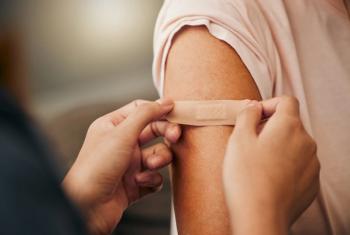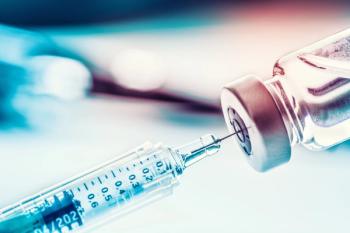
Evaluating risk of suicide and limiting youth access to firearms
At the 2023 American Academy of Pediatrics National Conference & Exhibition, Eric J. Sigel, MD, FAAP, professor of pediatrics, University of Colorado School of Medicine, explains his session "Suicide and Gun Violence: What We Know, What We Can Do."
Interview transcript (edited for clarity):
Contemporary Pediatrics®:
What were the biggest takeaways from your session “Suicide and Gun Violence: What We Know, What We Can Do” presented at the 2023 American Academy of Pediatrics National Conference & Exhibition?
Eric J. Sigel, MD, FAAP:
The major take home points are first to understand that suicide is the second leading cause of death for youth ages 10 through 24, and the leading mechanism of death is by firearms. 46% of youth who do die by suicide die by firearms and almost all the time, 85% of the time, youth find a firearm from their parents home, or I should say use a firearm from their parents home. What we really focus on is decreasing the accessibility of a firearm for youth, whether they're in suicidal crisis, or even just generally who aren't exhibiting any issues.
Contemporary Pediatrics:
How can the primary health care provider play a role?
Sigel:
There's a major effort to screen youth for suicidal risk. In addition to doing depression screening, most of us do depression screening using a Patient Health Questionnaire-9 (PHQ-9), that's not sufficient to detect a youth who's at risk for suicide. There are a couple of different ways to do so. We're suggesting using the ASQ, the Asking Suicide Questions as a validated way to identify youth who may be at risk. The important thing though, to think about when we're looking at the mix of a suicide attempt in firearms is that first, firearms are an incredibly lethal way of dying. So if you use a firearm in a suicide attempt, 90% of the time they're going to die. We know that suicide is impulsive, we may or may not know if a youth has had past suicidal thinking, suicidal ideation. They can also react to any acute situations. So a major breakup, something going bad in their life, can lead them to acutely thinking, "okay, I'm going to end my life now." We know 50% of youth go from making the decision to attempt suicide to the actual attempt within an hour. So if there's a firearm available, oftentimes they will use that firearm. So we really encourage, at least minimally, what we call safest storage. So any firearm in the home should be stored, unloaded or locked up, either Ideally, with a lock box, or a gun cabinet can also be a cable lock for long guns, if you don't have a gun cabinet, ammunition stored separately and locked as well. There are too frequent situations where parents even store firearms, loaded and locked thinking it's a safe way to store those guns. But kids can gain access, whether they can figure out the code, using biometric locking devices is certainly better if it only recognizes your finger print. Safe guns also, that's our starting to use biometrics, whether it's fingerprint recognition of the parents, and so it's only the parent, the owner of that gun, I can have access that can gain access to that gun. So really doing everything to put distance between the youth who may be having suicidal thinking and that firearm is is really important. The other level when we as pediatricians are counseling families in the face, if we're aware of suicidal ideation, then the first thing to make that kid safe in terms of distancing themselves from access to a gun is temporary removal of those firearms. Because if you know a kid is in this risky situation, and there's potential access, then that can lead to disaster. So if you can figure out a way to store the firearms at another relative's house, at a friend's house where there aren't kids, law enforcement, shooting ranges. There are lots of different places in any community where you can temporarily store guns. So that's really the first recommendation. So it's our job as pediatricians to counsel families on the best ways to distance their youth from access to a gun.
Newsletter
Access practical, evidence-based guidance to support better care for our youngest patients. Join our email list for the latest clinical updates.










